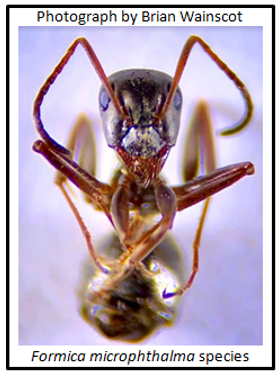NATIONAL ANT BARCODING PROJECT
The Las Vegas Area Barcoding Team, a CSN student and faculty mixed team, participated in a national DNA Barcoding effort funded by the National Institute of General Medical Sciences of the National Institutes of Health and DNA Learning Center at Cold Spring Harbor Laboratory to help identify and map ant species of the United States. This team was able to publish nine (9) gene sequences with four (4) of the sequences being new polymorphisms and two (2) of them novel sequences. These submissions will be used to monitor ants' ranges and contribute to data that reveals responses to climate change and the movement of invasive species.
This program provides an invaluable opportunity for students to experience authentic research, in a structured manner, while contributing to a larger (and growing) body of scientific knowledge.
Researcher Team: Prof. Brain Wainscot, Dr. Sonja Burd, Dr. Chelsey McKenna, and Jennifer Stevens of the Department of Biological Sciences, College of Southern Nevada.
Buck, R., Ortega-Del Vecchyo, D., Gehring, C., Michelson, R., Flores-Rentería, D., Klein, B., Whipple, A.V. and Flores-Rentería, L., 2023, Sequential hybridization may have facilitated ecological transitions in the Southwestern pinyon pine syngameon. New Phytol, 237: 2435-2449. https://doi.org/10.1111/nph.18543
Whittemore, A.T. and Miller, R.E., 2023, Dynamic properties of the pinyon pine syngameon. New Phytol, 237: 1943-1945. https://doi.org/10.1111/nph.18707
Drezner, T.D. 2022. Population structure response and life-cycle compression in different environments in a keystone species. The Southwestern Naturalist. 66(1): 84-86. https://doi.org/10.1894/0038-4909-66.1.84
Drezner, T.D. and Hüner, P.A. 2021. Seasonal photoinhibition of photosystem II in a cold-climate Canadian cactus (Opuntia cespitosa). Haseltonia. 28: 48-58 https://doi.org/10.2985/026.028.0106
Drezner, T.D. and Drezner, Z. 2021. Informed cover measurement: guidelines and error for point-intercept approaches. Applications in Plant Sciences. 9(9-10): e11446. https://doi.org/10.1002/aps3.11446
